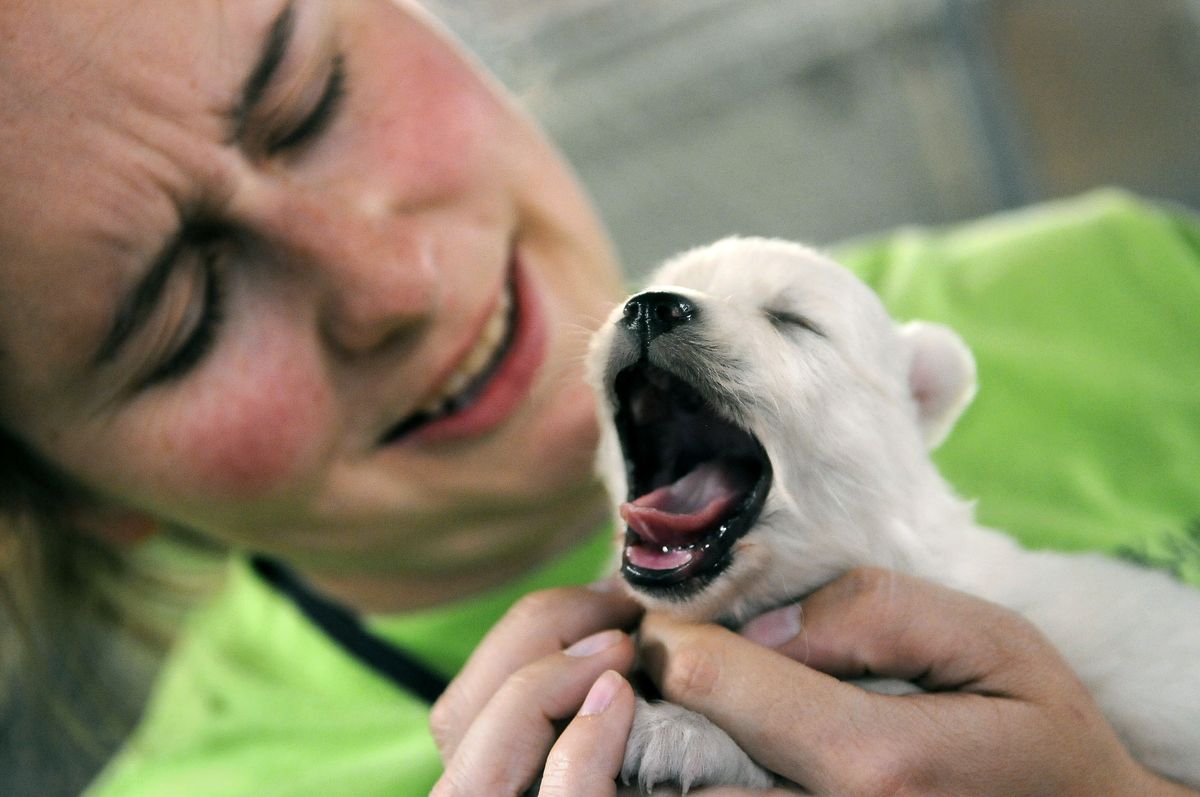Rescued puppies seek caring home
Volunteers assist in Tri-City transfer

In a firm yet gentle voice, Richard Danner coaxed the puppies from their cages Friday afternoon.
“Come here, little one. I’ll help you,” he said. “Come on …”
One by one the dogs ended up in his arms. Each was handed to volunteers at the Spokane Humane Society, who soothed the American Eskimo dogs with assuring tones and gentle strokes.
Spokane-area shelters took in 45 of the dogs – balls of white fluff with intelligent eyes. Fifty went to Seattle. Dozens more were sent elsewhere.
In all, there were 371 of the little white dogs seized from the squalor of a Kennewick woman’s kennel – what the Humane Society of the United States called one of the worst puppy mills in memory.
Dave Richardson, executive director of the Spokane Humane Society, believes the episode can be transformed into a blessing.
“We’re going to find loving homes for dogs,” he said. “They are beautiful and sweet, and people want to help.”
Indeed, since news of the puppy mill raid broke this week, dozens of inquiries about the dogs have flooded animal shelters. Richardson welcomes every call and says his staff will do their best to match people and pets, whether they are the dogs taken from Kennewick, abandoned old mutts, or fussy purebreds that proved too much to handle for their owners.
Sue Anderson, who works as part of the Humane Evacuation Animal Rescue Team in Spokane, expects the American Eskimo dogs will be adopted quickly because of their white coat, small size and knack for making a good companion.
The breed is thought to have originated in the U.S. by German immigrants, Richardson said. They are active and bright, seek attention and make good family dogs, he added.
They like to bark and need their double white coats brushed often.
In Kennewick, the little dogs were neglected. With the efficiency of a factory assembly line, each one arriving in Spokane received a shot to prevent canine distemper and parvovirus, then a squirt of bordetella vaccine up the nose to protect against kennel cough, and a swallow of yellow goop called Strongid to fight worms. Then it was off to rows of kennels, each holding two or three dogs, except in one case where the staff rejoined a mother and her four 5-week-old puppies.
One dog, an unnamed little pooch referred to as “No. 43” in paperwork, seemed ready for a fresh start. He was as excited as a child on the first day of vacation, jumping up and down and letting out sharp little yips. At last he sat down and even appeared to smile as his right ear flopped just a bit.
“Aren’t these puppies just incredible,” said Joni Cooper, a Humane Society staffer who cradled several in her arms and carried them into the kennels.
The 45 puppies arrived in Spokane in an air-conditioned, 50-foot-long trailer hauled by Danner, a truck driver and self-described dog person. He’s a dog rescuer by profession, going from one broken-up puppy mill to another to scoop up ill-treated dogs and drive them to shelters and new homes.
In Kennewick, he helped officials and a network of dog lovers save the animals. For some dogs it was too late. He described a sad scene of dead dogs and others left starving and sleeping in feces.
“We think she wanted to breed them down to toy dogs,” he said. “Sad. It just all got away from her.”
Ella Stewart, 66, was arrested and charged with misdemeanor animal cruelty for her operation.
Some of the dogs were caged in shopping carts. Some were kept in crates and rabbit enclosures.
Four puppies were dumped in a concrete tub topped with wire. They had red marks beneath their eyes, channels where tears drained from eyes burned by urine fumes.
“It was really nasty,” Danner said. “To be here must be heaven for them.”
The kennels were cleaned and the dogs clustered together. Rather than sever the bonds, the placement affords them a degree of familiarity while rewarding them with ample room, food and water, officials explained.
Richardson said the dogs are expected to quickly lose their pack mentality.
Each will be spayed or neutered, socialized with people, given health assessments and groomed, temperament trained and finally paired with the right person.
It’s the same treatment given to all of the 3,000 animals the Humane Society finds a home for every year.
“We hope that these sorts of problems encourage people to adopt pets from shelters rather than buy from people running puppy mills,” Richardson said.